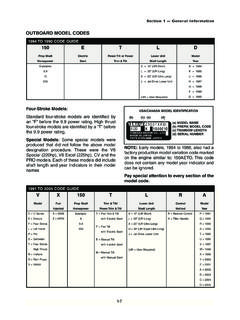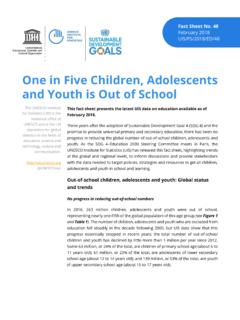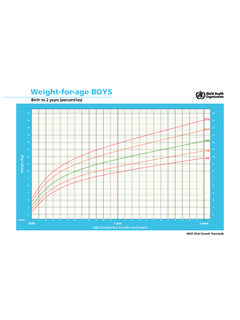Transcription of Digital Transformation in the Age of COVID-19
1 Digital Transformation in the Age of COVID-19 BUILDING RESILIENCE AND BRIDGING DIVIDESDIGITAL ECONOMY OUTLOOK 2020 SUPPLEMENTThis work is published under the responsibility of the Secretary-General of the OECD. The opinions expressed and arguments employed herein do not necessarily reflect the official views of OECD member document, as well as any data and map included herein, are without prejudice to the status of or sovereignty over any territory, to the delimitation of international frontiers and boundaries and to the name of any territory, city or statistical data for Israel are supplied by and under the responsibility of the relevant Israeli authorities. The use of such data by the OECD is without prejudice to the status of the Golan Heights, East Jerusalem and Israeli settlements in the West Bank under the terms of international credits: Cover use of this work, whether Digital or print, is governed by the Terms and Conditions to be found at cite this publication as: OECD (2020), Digital Transformation in the Age of COVID-19 : Building Resilience and Bridging Divides, Digital Economy Outlook 2020 Supplement, OECD, Paris, Transformation IN THE AGE OF COVID-19 When the COVID-19 pandemic broke out earlier this year, much of the world moved online, accelerating a Digital Transformation that has been underway for decades.
2 Children with at-home Internet access began attending class remotely; many employees started working from home; and numerous firms adopted Digital business models to maintain operations and preserve some revenue flows. Meanwhile, mobile applications were developed to help track and trace the development of the pandemic; and researchers employed artificial intelligence (AI) to learn more about the virus and accelerate the search for a vaccine. Internet traffic in some countries increased by up to 60% shortly after the outbreak (OECD, 2020a), underscoring the Digital acceleration that the pandemic sparked. While these activities demonstrate the tremendous potential of the Digital Transformation , the pandemic has also accentuated the gaps that remain. Although some Digital divides have narrowed fast in recent years, others have not followed the same pace, leaving some behind in the COVID-induced Digital acceleration.
3 Moreover, the increased reliance on Digital solutions has added new urgency to concerns around privacy and Digital presents countries with a major challenge. It is unlikely that economies and societies will return to pre-COVID patterns; the crisis has vividly demonstrated the potential of Digital technologies and some changes may now be too deep to reverse. Faced with a future where jobs, education, health, government services and even social interactions may be more dependent on Digital technologies than ever before, failing to ensure widespread and trustworthy Digital access and effective use risks deepening inequalities, and may hinder countries efforts to emerge stronger from the pandemic. The OECD Digital Economy Outlook 2020 (OECD, 2020b) highlights the growing importance of Digital technologies and communications infrastructures in our daily lives, and reveals that governments are increasingly putting Digital strategies at the centre of their policy agendas.
4 As countries work to respond to and recover from the COVID-19 crisis, now is the moment to ensure an inclusive Digital Transformation , with co-ordinated and comprehensive strategies that build resilience and bridge Digital divides for a post-COVID connectivity has allowed many businesses and individuals to adapt to the crisis .. Fast and reliable connectivity facilitates interactions between people, organisations and machines, and enables the use of connected devices in critical contexts, including health, manufacturing and transport. Connectivity has steadily improved over time; mobile broadband subscriptions in OECD countries increased from 32 subscriptions per 100 inhabitants in 2009 to nearly 113 subscriptions per 100 inhabitants in June 2019. At the same time, average mobile data usage quadrupled over the course of just four years, reaching GB in 2018, and prices for high-usage mobile broadband plans decreased by about 60% from 2013 to 2019.
5 Though rising at a slower pace, by June 2019 fibre accounted for 27% of all fixed broadband subscriptions in the OECD (Figure 1), and no less than 50% in nine OECD 1. The OECD Digital Economy Outlook 2020 The OECD Digital Economy Outlook 2020 examines trends and analyses emerging opportunities and challenges in the Digital economy. It highlights how OECD countries and partner economies are taking advantage of information and communication technologies (ICTs) and the Internet to meet their public policy objectives. Through comparative evidence, it informs policy makers of regulatory practices and policy options to help maximise the potential of the Digital economy as a driver for innovation and inclusive third edition of the OECD Digital Economy Outlook provides a holistic overview of converging trends, policy developments and data on both the supply and demand sides of the Digital economy.
6 It illustrates how the Digital Transformation is affecting economies and societies. Finally, it provides a special focus on how the COVID-19 pandemic is amplifying opportunities and challenges from the Digital Transformation IN THE AGE OF COVID-19 : BUILDING RESILIENCE AND BRIDGING DIVIDES OECD 2020 Digital Transformation IN THE AGE OF COVID-19 Figure 1. Fibre broadband connections, June 2019 As a percentage of total fixed broadband subscriptions0902010403060508070%Q2 2019Q2 2017Q2 2015 Kore aJapanLithuaniaSwedenLatv iaSpainIc elandFi nlandNorwayNew ZealandPort ugalLuxembourgEstoniaSloveniaDenmarkSlov ak RepublicOECDC hileHungaryMexicoTu rk eyPolandSwitzerlandFr anceCzech RepublicAustra li aNetherlandsUnited StatesCanadaColombiaIr elandIt al yGermanyAustriaUnite d KingdomIs ra elBelgiu mGr eeceNotes: Fibre subscriptions data include fibre-to-the-home, fibre-to-the-premises and fibre-to-the-building and exclude fibre-to-the-cabinet and fibre-to-the-node.
7 In Australia, a new entity using a different methodology is collecting data reported for December 2018 and onwards. Figures reported from December 2018 comprise a series break and are incomparable with previous data for any broadband measures Australia reports to the OECD. The OECD definition of fibre differs from fibre classifications commonly used in Australian reporting. These figures treat connections known in Australia as fibre-to-the-node and fibre-to-the-curb as DSL connections, while fibre-to-the-premises and fibre-to-the-basement are treated as fibre connections. Data on technology type prior to Q2 2016 should be treated as indicative until further notice. Data for Israel are OECD estimates. Data for Switzerland and United States are : OECD (2020c), Broadband Portal (database), (accessed on 14 March 2020).
8 12 This high level of connectivity enabled many businesses and households in the OECD to transition online after governments implemented national lockdowns to stem the initial spread of COVID-19 . In France, for example, it allowed businesses to operate remotely following a national lockdown order in early 2020, and industries with the highest levels of teleworking were able to maintain business activity at 70% to 80% of normal levels.. but COVID-19 has raised the bar and may open new divides With the swell of digitally enabled economic and social activity, COVID-19 has raised the stakes around Digital access and engagement, reinforcing the fact that connectivity and use of Digital technologies are dynamic goals. Although some online activity may decline as COVID-19 treatments begin to emerge and enable greater in-person interactions, it is likely to remain high in areas for which the pandemic has acted as a catalyst, including telework, e-commerce, e-health and e-payments.
9 This maintains pressure on establishing high-quality connectivity as well as boosting the ability of people and firms to use increasingly sophisticated Digital governments adjust their strategies in response, they should keep in mind that increased reliance on digitalisation could risk opening new Digital divides and/or exacerbating those that have proved persistent over the years. Across OECD countries, for example, Internet users ranged from over 95% to less than 70% of the adult population in 2019 (Figure 2), and there are important demographic differences in Internet use. Although 58% of those aged 50-74 used the Internet daily in 2019 up from only 30% in 2010 this remains well below the average share of daily Internet users aged 16-24 (the so-called Digital natives ), which was close to 95%. There are also persistent skills gaps across demographic groups and countries, with people of higher skill or income levels making better use of the Internet and online activities, and being better able to access knowledge, job opportunities, and health and education services.
10 Addressing the Digital gender divide remains an important policy goal, as well: women more frequently experience job stress associated with frequent computer use at work (OECD, 2020d), and skills in high demand in Digital intensive sectors are more frequently displayed by men (OECD, 2018). Digital Transformation IN THE AGE OF COVID-192 Digital Transformation IN THE AGE OF COVID-19 : BUILDING RESILIENCE AND BRIDGING DIVIDES OECD 2020 Digital Transformation IN THE AGE OF COVID-19 Digital Transformation IN THE AGE OF COVID-19 Figure 2. Internet users by age, 2019 As a percentage of the population in each age group%2030405060708090100 All16-24 year-olds55-74 year-oldsIc elandNorwaySwedenDenmarkSwitzerlandLuxem bourgKore aNetherlandsJapanUnite d KingdomFinlandCanadaGermanySpainAustra li aIr elandBelgiumEstoniaFr anceAustriaOECDC zech RepublicLatv iaIsrae lChileSloveniaSlovak RepublicUnite d StatesLithuaniaPolandHungaryCosta RicaGr eeceIt al yPort ugalTu rk eyBr az ilMexicoColombiaNotes: Internet users are those having used the Internet in the last 3 months, except for Colombia and Japan (last 12 months) and the United States (any time).














